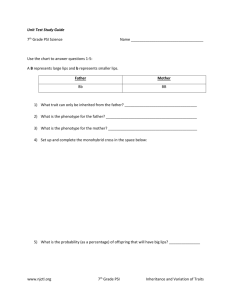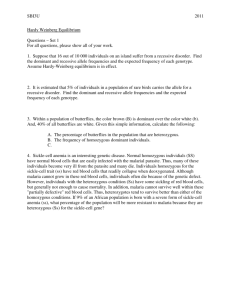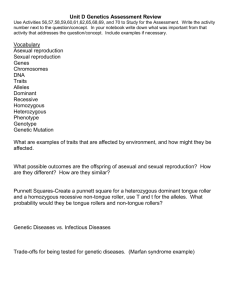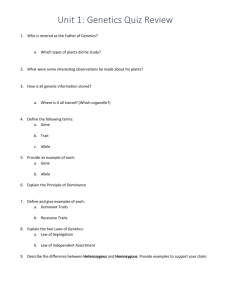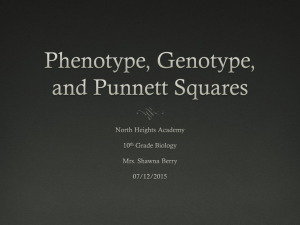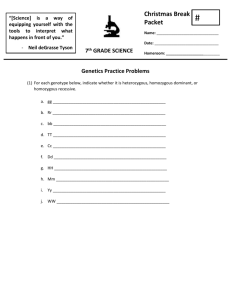Genetics Review Worksheet: Punnett Squares & Heredity
advertisement
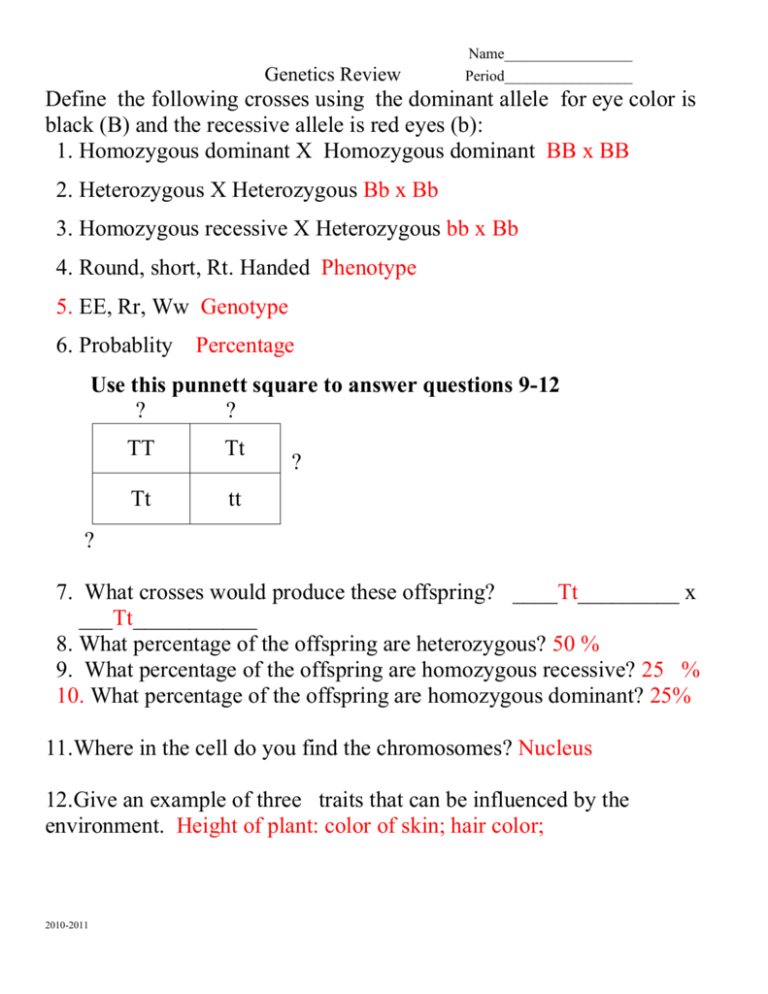
Genetics Review Name_________________ Period_________________ Define the following crosses using the dominant allele for eye color is black (B) and the recessive allele is red eyes (b): 1. Homozygous dominant X Homozygous dominant BB x BB 2. Heterozygous X Heterozygous Bb x Bb 3. Homozygous recessive X Heterozygous bb x Bb 4. Round, short, Rt. Handed Phenotype 5. EE, Rr, Ww Genotype 6. Probablity Percentage Use this punnett square to answer questions 9-12 ? ? TT Tt Tt tt ? ? 7. What crosses would produce these offspring? ____Tt_________ x ___Tt___________ 8. What percentage of the offspring are heterozygous? 50 % 9. What percentage of the offspring are homozygous recessive? 25 % 10. What percentage of the offspring are homozygous dominant? 25% 11.Where in the cell do you find the chromosomes? Nucleus 12.Give an example of three traits that can be influenced by the environment. Height of plant: color of skin; hair color; 2010-2011 Genetics Review Name_________________ Period_________________ 13.Give 3 inherited traits from family members ? Eye color; hair color; height; 14.What environmental conditions can affect the genes of different species and cause them to change? Sunlight; water; pollution; nutrition 15.In mice, the dominant allele for eye color is black (B), and the recessive allele is Red eyes (b). If two heterozygous parents are crossed, what will be all the possible genotypes and phenotypes? Draw a Punnett square to prove your idea. B – black b - red Phenoype: Genotype: BB –25%____ __Black eyes__75%__ Bb – 50% __Red Eyes___25%__ bb - 25% 16. What are two differences between asexual and sexual reproduction? Asexual needs only one parent Sexual needs 2 parents 17. Define the three types of asexual reproduction and match with the picture. a__ 2010-2011 c__ Name Period b__ a. budding – offspring grows out of parent b. binary fission –cells split and replicate DNA c. fragmentation/regeneration – body of parent break and produce offspring 18. Label the following. * * * * * * * * 19. Explain the function for the each of the organelles that has a * next to them. 2010-2011





